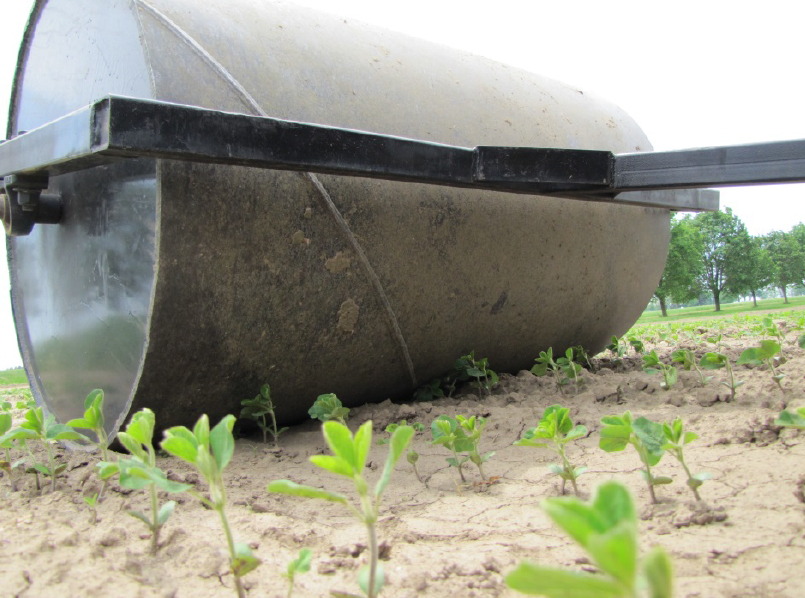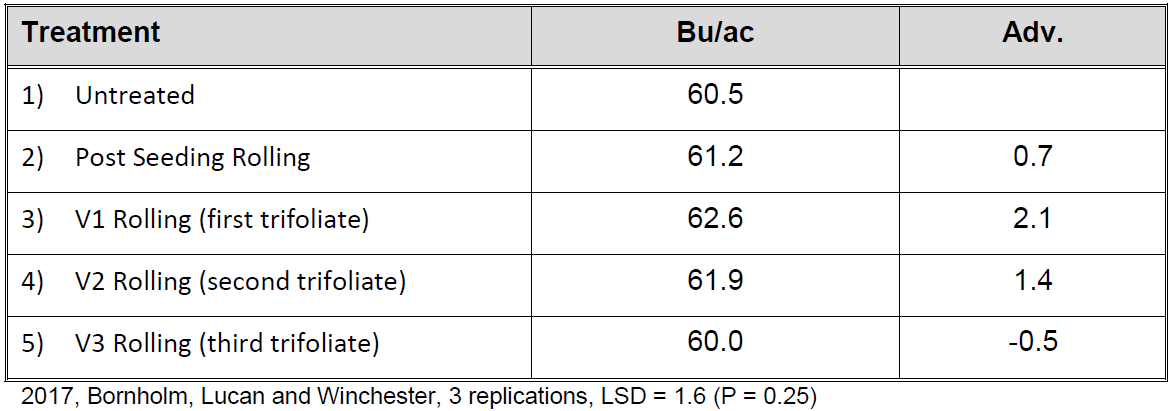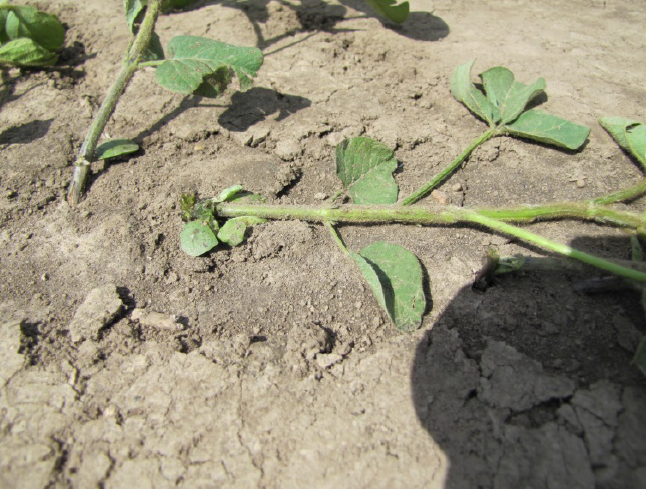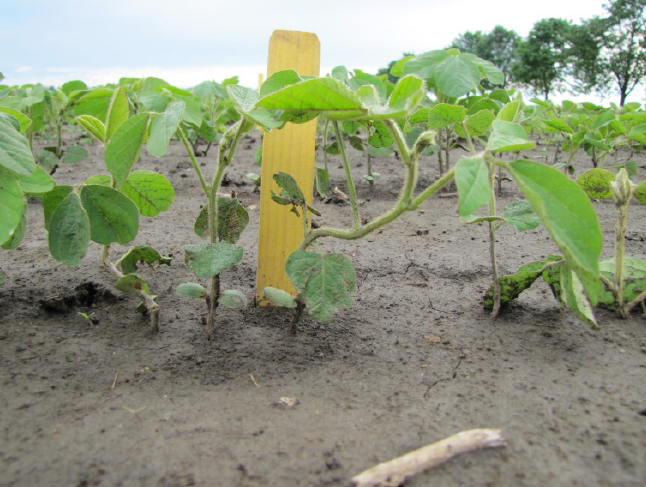Purpose
Land rolling helps conserve moisture and prepares the field for harvest. Rolling helps level the soil and pushes rocks into the ground, improving combine efficiency. Some producers roll immediately after planting, while others wait until the soybeans have emerged. Rolling immediately after planting provides improved seed-to-soil contact and reduces the likelihood of plant injury. However, it also increases the chance of soil crusting, which hinders soybean emergence. Soybean fields that are not rolled after the drill may emerge more quickly. If heavy rainfall occurs after seeding, rolled fields are more prone to crusting. To avoid these challenges some growers choose to roll their fields after beans have emerged. There have also been reports that early season stress from post emergent rolling may shorten internodes, stimulate early season growth, increase pod number, thereby increasing yields.
The objectives of this project are to i) document yield gains or losses from post emergent rolling and ii) identify the correct plant growth stage to roll soybeans after emergence.
Methods
Four trials were established near Bornholm, Lucan, and Winchester in 2017. Two trials were no-till and two were conventionally tilled fields. The treatments applied were:
- Untreated control
- Land rolling immediately after seeding
- Land rolling at the V1 growth stage (first trifoliate)
- Land rolling at the V2 growth stage (second trifoliate)
- Land rolling at the V3 growth stage (third trifoliate)
Rolling was conducted using a 30 inch diameter smooth roller weighing 450 lbs per foot of roller. See Image 1. All treatments were replicated 3 times. Soybeans were planted in 15 inch rows with a row unit planter. A small tractor with 9 inch wide tires was used to avoid driving on emerged plants with tractor tires. Rolling was conducted in the afternoon when plants are less turgid and recover more quickly from rolling.
Results
Rolling soybeans after emergence provided a small yield gain but only at the V1 (first trifoliate) leaf stage. See table #1. The statistical confidence of this small yield gain is weak. Additional research will be necessary to determine the repeatability of the yield gain at the first trifoliate leaf stage. For those growers that choose to roll after emergence this study provides strong evidence that no yield loss is associated with that practice.
 Image 1: Soybeans being rolled at the V1 growth stage.
Image 1: Soybeans being rolled at the V1 growth stage.
Table 1. Soybean Yield Response to Land Rolling

Rolling emerged soybeans did not significantly reduce plant stands until it was delayed to the third trifoliate leaf stage. Once beans reach the third trifoliate stems beak off more easily killing the plant. See Image 2.
Tilled fields sustain more damage since the small plants do not have the protective cushion corn stalk residue provides in a no-till system. The main stem of plants may remain bent for the remainder of the season on some plants. See Image 3. This damage to the main stem did not appear to negatively impact the yield potential of plants.
 Image 2: Rolling at the 3rd trifoliate resulted in excessive plant stand losses.
Image 2: Rolling at the 3rd trifoliate resulted in excessive plant stand losses.
 Image 3: Some plants sustain stem damage that is visible throughout the rest of the growing season.
Image 3: Some plants sustain stem damage that is visible throughout the rest of the growing season.
Summary
- A small yield gain was observed when soybeans were rolled at the V1 (first trifoliate) leaf. The statistical confidence of this yield gain was weak so further research will be necessary to determine if this gain is repeatable.
- For producers that typically roll fields immediately after seeding this study provides strong evidence that no yield reductions occur if rolling is conducted at the first or second trifoliate leaf stage.
- Rolling soybeans after emergence does not reduce yields if fields are rolled during the heat of the day to ensure that soybeans are limp. Soybeans are the most turgid (stiff) during the morning hours and rolling during that time will result in more plant injury. Seedlings are vulnerable to being broken off at emergence so post emergent rolling should be delayed to the first trifoliate.
- If rolling is delayed to the third trifoliate excessive plant stand losses can occur especially from tractor tire damage.
Acknowledgements
We would also like to thank Pioneer, Syngenta and Dekalb for the seed provided for this project. This project was also supported through extension funding from the Grain Farmers of Ontario.
Project Contacts:
Horst Bohner (OMAFRA) horst.bohner@ontario.ca
